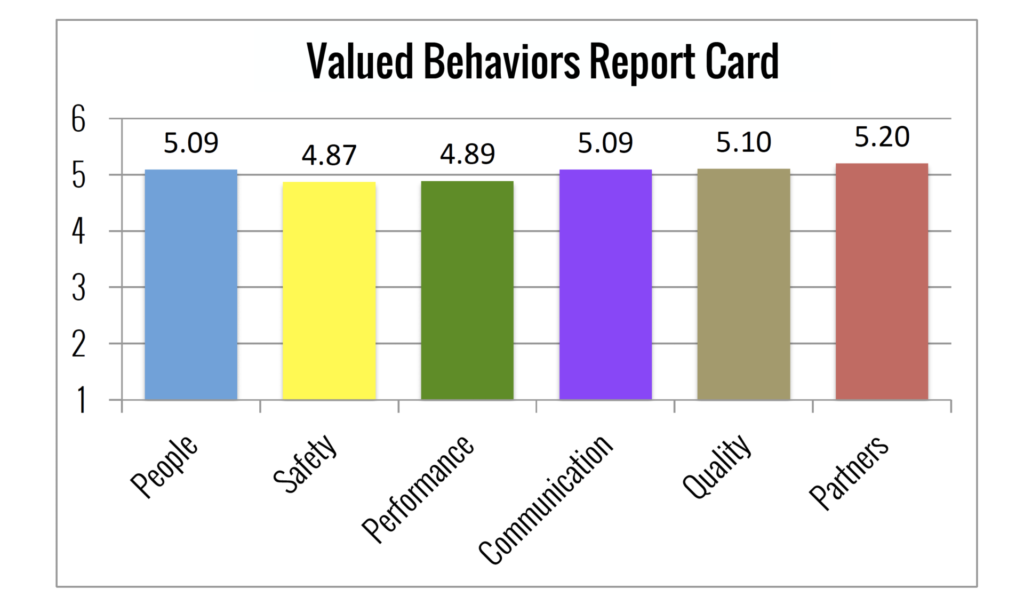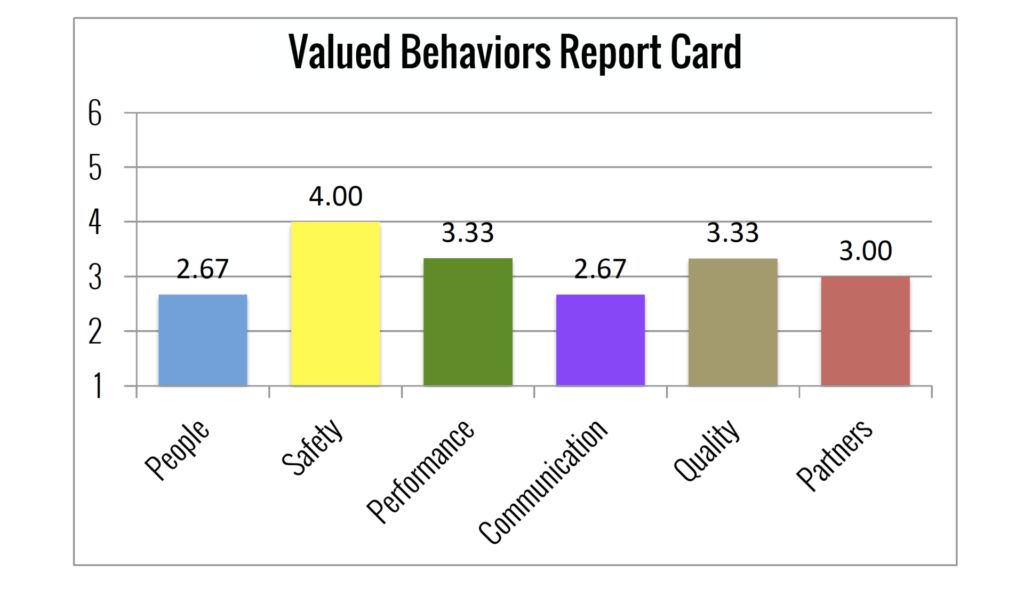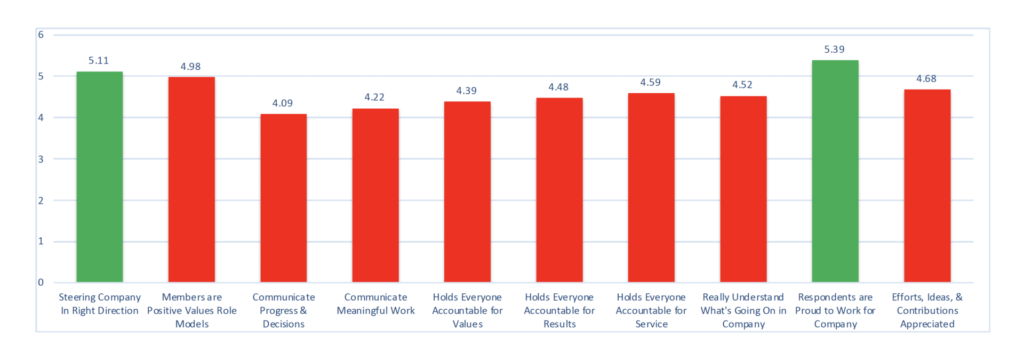Simply announcing the culture you want doesn’t ensure that every leader aligns to your desired culture.
Just as you measure progress towards desired results regularly, you must measure progress towards desired respect regularly. You must also gather objective feedback through regular assessments – at least twice annually – that enable employees to rate how well your company’s leaders model your values and behaviors.
By measuring values and respect in a structured and disciplined way, you can then refine every leader’s efforts and, ultimately, improve the quality of your company’s culture.
The problem is that very few leaders have been asked to measure values or respect across their organization. Most don’t know how. Doing a values survey poorly is worse than not doing a values survey at all. Lousy questions result in lousy data that is not helpful or actionable.
You need proven expertise to help you build a values assessment platform to gather insightful feedback and to act on the objective data you collect. Chris Edmonds has that expertise. He’s been helping clients measure values and respect for decades.
Our values assessments help you
Create an effective values survey based on your desired culture
Administer your effective values survey, gathering values feedback on all formal leaders
Debrief your survey results
Coach individual leaders to demonstrate your valued behaviors in every interaction
Find out how teams sharing combined values can spark the energy needed to create exceptional results!
DETAILS ABOUT THE
Values and Behaviors Survey
The structure of your survey is vitally important. Survey items (or questions) are best derived from your defined values and behaviors. (If your company hasn’t done those yet, Chris and his team can help you define your organizational constitution, which is the foundation of your desired culture).
Questions must gather feedback on one leader and one valued behavior. The survey structure invites the leader’s direct reports to rate that leader on each valued behavior. (The survey can also invite ratings of leaders and behaviors from indirect reports in a separate profile.)
Ratings are confidential; they are not attributed to any individual respondent.
Here’s an example of a survey item from one client: “Roberta Garcia does what she says she will do.” This question rates this leader on one of the company’s valued behaviors – “I do what I say I will do” from their integrity value.
Note that each question is stated positively, describing exactly how you want leaders to behave in the workplace. Employees score each question on a six-point scale. The only desirable responses are at the 5-6 level – “agree” and “strongly agree” – to the positive questions on your survey. In essence, a 5-6 score is a degree of “yes, this leader models this behavior,” while a 1-4 score is a degree of “no, this leader does not model this behavior.” This proven approach ensures that the resulting profile presents feedback that is simple and actionable. This survey is conducted formally at least twice each year.
Values & Behaviors Scorecard Examples
Here is an example of one client’s scorecard summary for the president of the company. Their six values (across the bottom of this graph) incorporate fifteen specific valued behaviors.
The ratings of the president’s direct reports and indirect reports show he’s above the 5-6 level on four of the six values – and is “just shy” of meeting the desired level in the other two values.

By comparison, here is a summary scoring graph from a different formal leader in this organization. This person is a front-line supervisor rated by his direct reports.
The visual nature of the summary graph shows that this leader’s direct reports do not feel he effectively models the desired valued behaviors of the organization in daily interactions. Average scores in the 2-4 range for all six values mean this supervisor needs prompt redirection and coaching to fully embrace both respect and results on the job.

Again, these samples are from a survey that was customized to this client’s desired culture. These surveys are not “off the shelf,” ready to be administered across your organization. Your values and behaviors survey must be crafted specifically for your desired culture and values.
DETAILS ABOUT THE
Executive Team Effectiveness Survey
The Executive Team Effectiveness Survey is an annual assessment of your executive team’s ability to lead toward your desired culture.
This 10-question survey – which include best practices from effective executive teams that sustain purposeful, positive, productive work cultures – is customized for your company. This survey is administered once annually.
Items cover topics that include effective communication from the team, validation of contributions and values, accountability, strategic direction, and members’ ability to serve as positive role models. These ten items are rated on our six-point scale. Responses are gathered from every employee, from front-line staff to senior executives.
Executive Team Effectiveness Scorecard Example
Here is an example of one client’s recent first survey of their executive team’s effectiveness using this assessment.

We can see that this executive team exceeds the standard (ratings at the 5-6 level) in two of the ten questions – and is seen as less than effective in eight of ten questions.
While these scores are not overly positive – what we want are ten green bars indicating 5-6 ratings across all respondents – this range of scores are quite typical for the first run of this assessment at a company. These executives admit that they previously saw their job as “managing results.” As they continue to work towards sustaining a purposeful, positive, productive work culture, they know they must do more to validate, communicate, connect, reflect, and more – every day.
Work with Chris, and you'll be In good company

Richland

Consolidated

Medicine Man

Five Below

World Kitchen

Vstarr

Eleven

Eco

Time

Pesco

Mercado

Waste Management

Horizon

Veon

Embrace

Thulium

DHSC

NACM

